 W
WThe Armenian Genocide was the systematic mass murder and expulsion of 1.5 million ethnic Armenians carried out in Turkey and adjoining regions by the Ottoman government between 1914 and 1923. The starting date is conventionally held to be 24 April 1915, the day that Ottoman authorities rounded up, arrested, and deported from Constantinople to the region of Angora (Ankara), 235 to 270 Armenian intellectuals and community leaders, the majority of whom were eventually murdered.
 W
WThe 100th anniversary of the Armenian Genocide was commemorated on April 24, 2015. April 24, 1915 is considered the beginning of the Armenian Genocide, and is commonly known as Red Sunday, which saw the deportation and execution of many Armenian intellectuals.
 W
WThe 1965 Yerevan demonstrations took place in Yerevan, Armenia on April 24, 1965, on the 50th anniversary of the Armenian Genocide. It is said that this event constitutes the first step in the struggle for the recognition of the Armenian Genocide of 1915.
 W
WThe March for Justice on April 24, 2015 was a six-mile march of over 130,000 participants from the neighborhood designated as Little Armenia in Hollywood to the Turkish consulate of Los Angeles, demanding recognition of the Armenian Genocide, which Turkey denies.
 W
WThe Anatolia College in Merzifon or American College of Mersovan was a 4-year college, high school, theological seminary, orphanage and hospital located in the town of Merzifon in the Sivas Vilayet of the Ottoman Empire. Classes were offered to both male and female students. Established by American missionaries, the college existed from 1886 to 1924. The college was essentially destroyed by the Armenian Genocide in 1915. Closed until 1919, it was subsequently relocated to Thessaloniki, Greece and still operates as Anatolia College.
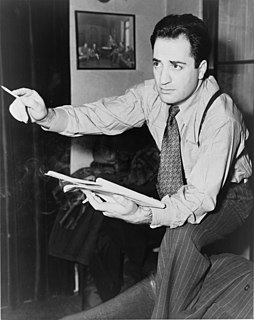 W
W"The Armenian and the Armenian" is a short story written by William Saroyan in August 1935 in New York. It was first published in 1936 in the collection of short stories entitled Inhale & Exhale. Over the years, the story has become known for the excerpt—"arguably [Saroyan's] most famous saying"—about the survival of the Armenian people after the genocide of 1915.
 W
WThe deportation of Armenian intellectuals, sometimes known as Red Sunday, was the first major event of the Armenian Genocide. Leaders of the Armenian community in the Ottoman capital of Constantinople, and later other locations, were arrested and moved to two holding centers near Angora. The order to do so was given by Minister of the Interior Talaat Pasha on 24 April 1915. On that night, the first wave of 235 to 270 Armenian intellectuals of Constantinople were arrested. With the adoption of the Tehcir Law on 29 May 1915, these detainees were later relocated within the Ottoman Empire; most of them were ultimately killed. More than 80 such as Vrtanes Papazian and Komitas survived.
 W
WBritish Diplomacy and the Armenian Question, from the 1830s to 1914 is a book by Armenian Historian and Diplomat Dr. Arman J. Kirakossian.
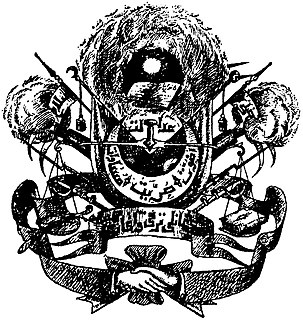 W
WThe Committee of Union and Progress (CUP), later the Party of Union and Progress, began as a secret society established as the Committee of the Ottoman Union in Constantinople on 6 February 1889 by medical students Ibrahim Temo, Mehmed Reshid, Abdullah Cevdet, İshak Sükuti, Ali Hüseyinzade, Kerim Sebatî, Mekkeli Sabri Bey, Nazım Bey, Şerafettin Mağmumi, Cevdet Osman and Giritli Şefik. It was transformed into a political organisation by Behaeddin Shakir, aligning itself with the Young Turks in 1906 during the period of the dissolution of the Ottoman Empire. In the West, members of the CUP were usually called Young Turks while in the Ottoman Empire its members were known as Unionists.
 W
WThe confiscation of Armenian properties by the Ottoman and Turkish governments involved seizure of the assets, properties and land of the country's Armenian community. Starting with the Hamidian massacres in the mid-1890s and peaking during the Armenian Genocide, the confiscation of the Armenian property lasted continuously until 1974. Much of the confiscations during the Armenian Genocide were made after the Armenians were deported into the Syrian Desert with the government declaring their goods and assets left behind as "abandoned". Virtually all properties owned by Armenians living in their ancestral homeland in Western Armenia were confiscated and later distributed among the local Muslim population.
 W
WThe Defense of Van was the resistance of the Armenian population of Van against the Ottoman Empire's attempts to massacre the Ottoman Armenian population of the Van Vilayet in the 1915 Armenian Genocide. Several contemporaneous observers and later historians have concluded that the Ottoman government deliberately instigated an armed Armenian resistance in the city and then used this insurgency as the main pretext to justify beginning the deportation and slaughter of Armenians from all over the empire. Witness reports agree that the Armenian posture at Van was defensive and an act of resistance to massacre.
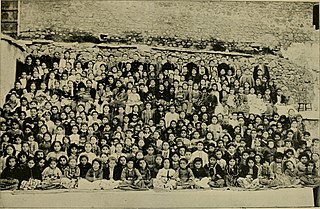 W
WEuphrates College was a coeducational high school in the Harput region, founded and directed by American missionaries and attended mostly by the Armenian community in the region.
 W
WJohn Marshall Evans served as United States ambassador to Armenia. He was confirmed to this position by the U.S. Senate on June 25, 2004. Evans began his service on August 8, 2004, but, as confirmed by President George W. Bush on May 24, 2006, was terminated for undisclosed reasons.
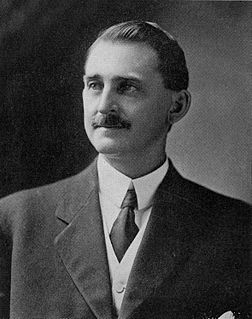 W
WHenry Harness Fout was an author and a missionary for the Near East Foundation which aimed to assist Armenian refugees from the Genocide who were dispersed throughout the Middle East. He was one of eighteen commission members returning to the United States from the Near East in 1919, when he reported on the massacre of Armenians.
 W
WThe Georgetown Boys, or Canada's Noble Experiment, was the first humanitarian act on an international scale by the country. This effort was spearheaded by the Armenian Relief Association of Canada. At this time Canada started to take in orphaned children from the Middle East. The first 50 came in 1923. The following year another 40 boys came. The boys came to Canada from the Middle East after they had been orphaned during the Armenian Genocide. By the end of the project, a total of 110 came to Georgetown, Ontario, and eventually came to be called the Georgetown Boys.
 W
WThe great fire of Smyrna or the catastrophe of Smyrna destroyed much of the port city of Smyrna in September 1922. Eyewitness reports state that the fire began on 13 September 1922 and lasted until it was largely extinguished on 22 September. It began four days after the Turkish military captured the city on 9 September, effectively ending the Greco-Turkish War, more than three years after the Greek army had landed troops at Smyrna on 15 May 1919. Estimated Greek and Armenian deaths resulting from the fire range from 10,000 to 100,000.
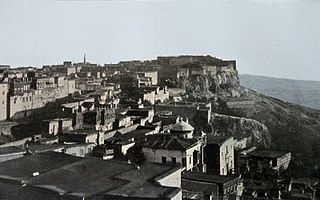 W
WHarput is an ancient town in Turkey, in the Ottoman Empire, falling under Mamuret-ul-Aziz Vilayet by the end of the empire; its site is now in the Elazığ Province. Artifacts belonging to around 2,000 BC were found in the area. The town is famous for its Harput Castle, and incorporates a museum, old mosques, a church, and the Buzluk (Ice) Cave.
 W
WThe Historiography of the Armenian Genocide is the study of how historians have constructed narratives detailing the causes and outcomes of the 1915 Armenian Genocide.
Richard Eugene Hoagland is a career ambassador in the United States Department of State. He was Principal Deputy Assistant Secretary in State's Bureau of South and Central Asian Affairs, 2013-2015. In the summer of 2016, based at the U.S. Embassy in Amman, Jordan, he was the senior U.S. liaison to the Russian Reconciliation Center at the Russian military base in Latakia, Syria. In 2017 he served as interim U.S. co-chair of the OSCE Minsk Group, the group appointed by the Organization for Security and Cooperation in Europe to coordinate international peacemaking efforts on the conflict in Nagorno-Karabakh.
 W
WThe Knights of Vartan Inc. is a non-political, non-sectarian, non-denominational fraternal organization established in 1916 in the USA that encourages its members to take leadership roles in cultural, educational, religious, and charitable organizations on the local, national and international level for the betterment of Armenians worldwide. The Knights of Vartan emphasizes patriotism, discipline, and knightly virtues, in order to strengthen the fabric of national life. The primary objectives of the Knights of Vartan are to create a spirit of brotherhood and cooperation among Armenians and to instill the principles of charity, justice, noble character and good citizenship.
 W
WThere is a recognition by several groups of Kurds of the participation of their ancestors in the Armenian Genocide during World War I. Some Kurdish tribes, mainly as part of the Ottoman army, along with the Turks and other people, participated in massacres of Armenians. Other Kurds opposed the genocide, in some cases even hiding or adopting Armenian refugees. Also, inmates in Ottoman prisons, including Kurds and Turks, were given amnesty and released from prison if they would massacre the Armenians.
 W
WOttoman labour battalions was a form of unfree labour in the late Ottoman Empire. The term is associated with disarmament and murder of Ottoman Armenian soldiers during World War I, of Ottoman Greeks during the Greek genocide in the Ottoman Empire and also during the Turkish War of Independence.
 W
WTsitsernakaberd is the official memorial to the Armenian Genocide victims in Yerevan, Armenia. It was opened in 1967 after a mass demonstration that took place in Yerevan on April 24, 1965, on the 50th anniversary of the deportation of hundreds of Armenian intellectuals from Constantinople that marked the beginning of the Genocide. After Armenia's independence from the Soviet Union in 1991, the memorial became part of official ceremonies. Since then, almost every foreign official who visited Armenia included a visit to the memorial to pay tribute to the victims of the Armenian Genocide. A visit to Tsitsernakaberd also includes a tour in the museum. Some notable visitors have planted trees near the memorial.
 W
WMusa Dagh is a mountain in the Hatay province of Turkey. In 1915 it was the location of a successful Armenian resistance to the Armenian Genocide, an event that inspired Franz Werfel to write the novel The Forty Days of Musa Dagh.
 W
WOperation Nemesis was a covert operation and an assassination campaign by the Armenian Revolutionary Federation (Dashnaktsutyun) carried out between 1920 and 1922, during which a number of former Ottoman political and military figures were assassinated for their role in the Armenian Genocide, as well as Azerbaijani figures for the 1918 massacre of Armenians in Baku. Shahan Natalie and Armen Garo are considered its masterminds. It was named after the Greek goddess of divine retribution, Nemesis.
 W
WFaik Ali Ozansoy was a Turkish politician, poet, and educator. He was the younger brother of Süleyman Nazif, an eminent man of letters and prominent member of the Committee for Union and Progress. Faik Ali was one of the foremost poets and writers of the Servet-i Fünun and Fecr-i Âti literary period. During World War I, Ozansoy served as the governor of Kütahya. Ozansoy is especially known for having saved the lives of thousands of Armenians during the Armenian Genocide. Due to protecting the life of Armenian Christians, Ozansoy was known as the "governor of the infidels" by his contemporaries. On 24 April 2013, the day of remembrance for the Armenian Genocide, various prominent figures of both the Armenian and Turkish community visited his grave to pay tribute.
 W
WThis page contains a selected list of press headlines relevant to the Armenian Genocide in chronological order, as recorded in newspaper archives. The sources prior to 1914 relate in large part to the Hamidian massacres and the Adana massacre.
 W
WArmenian Genocide recognition is the formal acceptance that the systematic massacres and forced deportation of Armenians committed by the Ottoman Empire from 1915 to 1923, during and after the First World War, constituted genocide. The consensus of historians and academic institutions on The Holocaust and genocide studies recognize the Armenian Genocide. However, despite the recognition of the genocidal character of the massacre of Armenians in scholarship as well as in civil society, some governments have been reticent to officially acknowledge the killings as genocide because of political concerns about their relations with the Republic of Turkey, the successor state of the Ottoman Imperial authorities which perpetrated the genocide. The governments of Turkey and its close ally Azerbaijan are the only ones that directly deny the historical factuality of the Armenian Genocide, and both are adamantly opposed to the recognition of the genocide by other nations, threatening economic and diplomatic consequences to recognizers.
 W
WThe Remaining Documents of Talaat Pasha, also known in Turkey as The Abandoned Documents of Talaat Pasha and Talaat Pasha's Black Book, is the title of a 2008 book by the Turkish journalist Murat Bardakçı. It reproduces in modern Turkish script a selection of documents from the WWI period by Mehmed Talaat Pasha, the Ottoman Empire's Grand Vizier and Minister of Interior, that deal with the relocations of both Muslim Turks and Armenians and the expropriation of abandoned Armenian and Greek property. Its full English title is The Remaining Documents of Talaat Pasha: Documents and Important Correspondence Found in the Private Archives of Sadrazam Talaat Pasha about the Armenian Deportations.
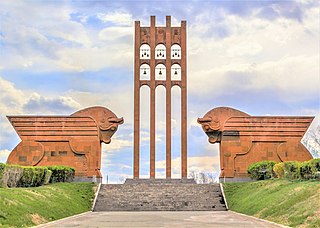 W
WSardarapat Memorial is a memorial complex to the Battle of Sardarapat located in the village of Araks, in the Armavir Province of Armenia, 11 kilometers southwest of Armavir town. In 1968 during the commemoration of the 50th anniversary of the Battle of Sardarapat that took place on May 22–26, 1918 a memorial park was laid out on the spot of the battlefield.
 W
WThe Battle of Sarikamish was an engagement between the Russian and Ottoman empires during World War I. It took place from December 22, 1914, to January 17, 1915, as part of the Caucasus Campaign.
 W
WHarutiun Shahrigian was an Armenian politician, soldier, lawyer, and author.
 W
WFred Shepard was an American physician who witnessed the Armenian Genocide. Due to his relief efforts, Shepard is known to have saved many lives during the genocide. He was especially known for trying to dissuade Turkish politicians from deporting the Armenians.
 W
WStatue of Humanity was a nearly completed statue in Kars, Turkey. Created by Turkish artist Mehmet Aksoy, the 30 m (98 ft) tall monument stood atop Kazıktepe, across from the ancient Castle of Kars. Visible from neighboring Armenia, the statue depicted two halves of a man, each reaching to hold the other’s hand. The monument was demolished in April 2011, only months after being criticized by then–prime minister Recep Tayyip Erdoğan as a "freak" or "monstrosity".
 W
WThe Tehcir Law, or, officially by the Republic of Turkey, the "Sevk ve İskân Kanunu" was a law passed by the Ottoman Council of Ministers on May 27, 1915 authorizing the deportation of the Ottoman Empire's Armenian population. The resettlement campaign resulted in the deaths of anywhere between 800,000 and over 1,500,000 civilians in what is commonly referred to as the Armenian Genocide. The bill was officially enacted on June 1, 1915 and expired on February 8, 1916.
 W
WTurkish courts-martial of 1919–20 were courts-martial of the Ottoman Empire that occurred soon after the Armistice of Mudros, in the aftermath of World War I. The leadership of the Committee of Union and Progress (CUP) and selected former officials were charged with several charges including subversion of the constitution, wartime profiteering, and the massacres of both Armenians and Greeks. The court reached a verdict which sentenced the organizers of the massacres – Talat, Enver, and Cemal – and others to death.
 W
WVaragavank was an Armenian monastery on the slopes of Mount Erek, 9 km (5.6 mi) southeast of the city of Van, in eastern Turkey.
 W
WYoung Turks was a political reform movement in the early 20th century that favored the replacement of the Ottoman Empire's absolute monarchy with a constitutional government. They led a rebellion against the absolute rule of Sultan Abdul Hamid II in the 1908 Young Turk Revolution. With this revolution, the Young Turks helped to establish the Second Constitutional Era in 1908, ushering in an era of multi-party democracy for the first time in the country's history.